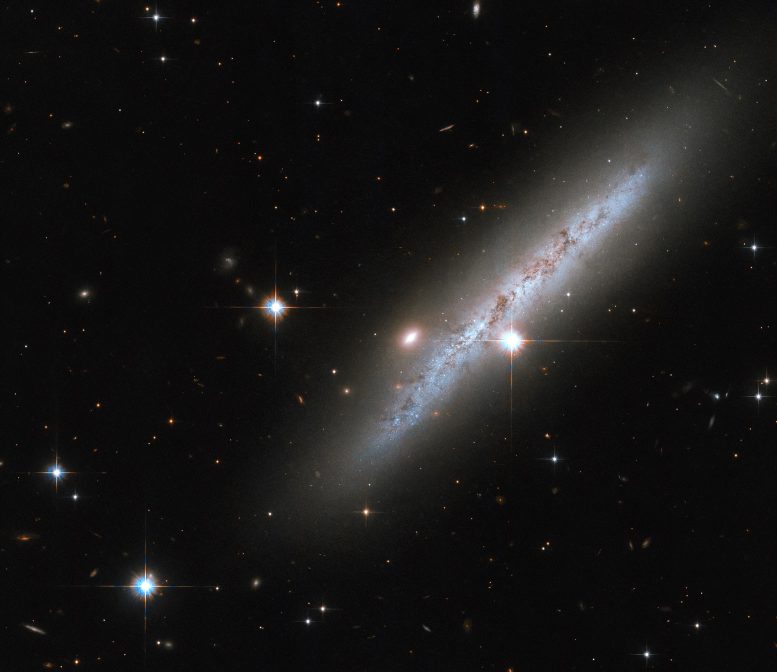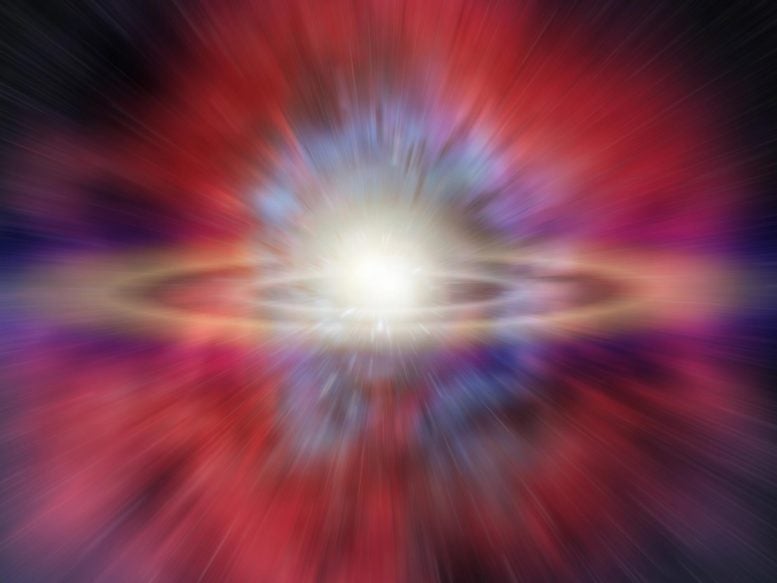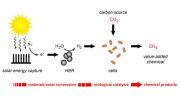
Hubble Space Telescope image of spiral galaxy UGC 2890. Located in the Camelopardalis constellation, the UGC 2890 galaxy is approximately 30 million light-years away from Earth. In 2009, astronomers witnessed a highly energetic Type II supernova explosion in this galaxy, which has since faded from view. Recently, the Hubble Space Telescope diverted from its routine observation schedule to investigate the aftermath of this cataclysmic event. Credit: ESA/Hubble & NASA, C. Kilpatrick
The Hubble Space Telescope captured an image of the aftermath of a Type II supernova explosion in the spiral galaxy UGC 2890, which is located 30 million light-years away in the Camelopardalis constellation. While the supernova occurred in 2009, Hubble recently took a break from its regular observing schedule to inspect the aftermath of the explosive event. Hubble’s investigation of Type II supernovae helps to reveal insights into the types of stars that create these explosions and any survivors of these catastrophic events.
The somewhat amorphous spiral galaxy UGC 2890 appears side-on in this image from the NASA/ESA Hubble Space Telescope, with bright foreground stars studding the image. This galaxy lies around 30 million light-years away in the constellation Camelopardalis. In 2009 astronomers spotted a catastrophically powerful supernova explosion in UGC 2890. While the supernova itself has long since faded from view, Hubble recently took a break from its regular observing schedule to inspect the aftermath of this explosive event.

A Type II supernova is a powerful and energetic explosion that occurs when a massive star exhausts the elements necessary to fuel nuclear fusion in its core. As the core can no longer support the crushing force of gravity, it suddenly implodes, causing the star’s outer layers to collapse inwards and rebound out into space in a massive explosion. These catastrophic events result in the death of the massive star and can reveal insights into the types of stars that create Type II supernovae, as well as reveal any survivors of these colossal supernova explosions.
A Type II supernova is a spectacularly energetic explosion that marks the violent death of a massive star. As it runs out of the elements necessary to fuel nuclear fusion, the core of a massive star flickers out and stops producing energy. With nothing to support the crushing force of gravity, the core of the star shrinks and then suddenly implodes, leaving the star’s outer layers to collapse inwards and rebound out into space as a supernova explosion.
This observation is one of many Hubble investigations of Type II supernovae. Astronomers turned to Hubble’s Advanced Camera for Surveys (ACS) to explore the surroundings of Type II supernovae in the hope of discovering the ages and masses of stars in the neighborhood. This will reveal insights into the types of stars that eventually create Type II supernovae, as well as revealing any stellar survivors of colossal supernova explosions.









Credit for that picture of the ‘explosion’? Or is it another “artist’s impression” relying on Dark Mutter theories?
All in all, not very informative and extremely repetitive. I want my time back!
Wheres the spectacu.ar capture again?